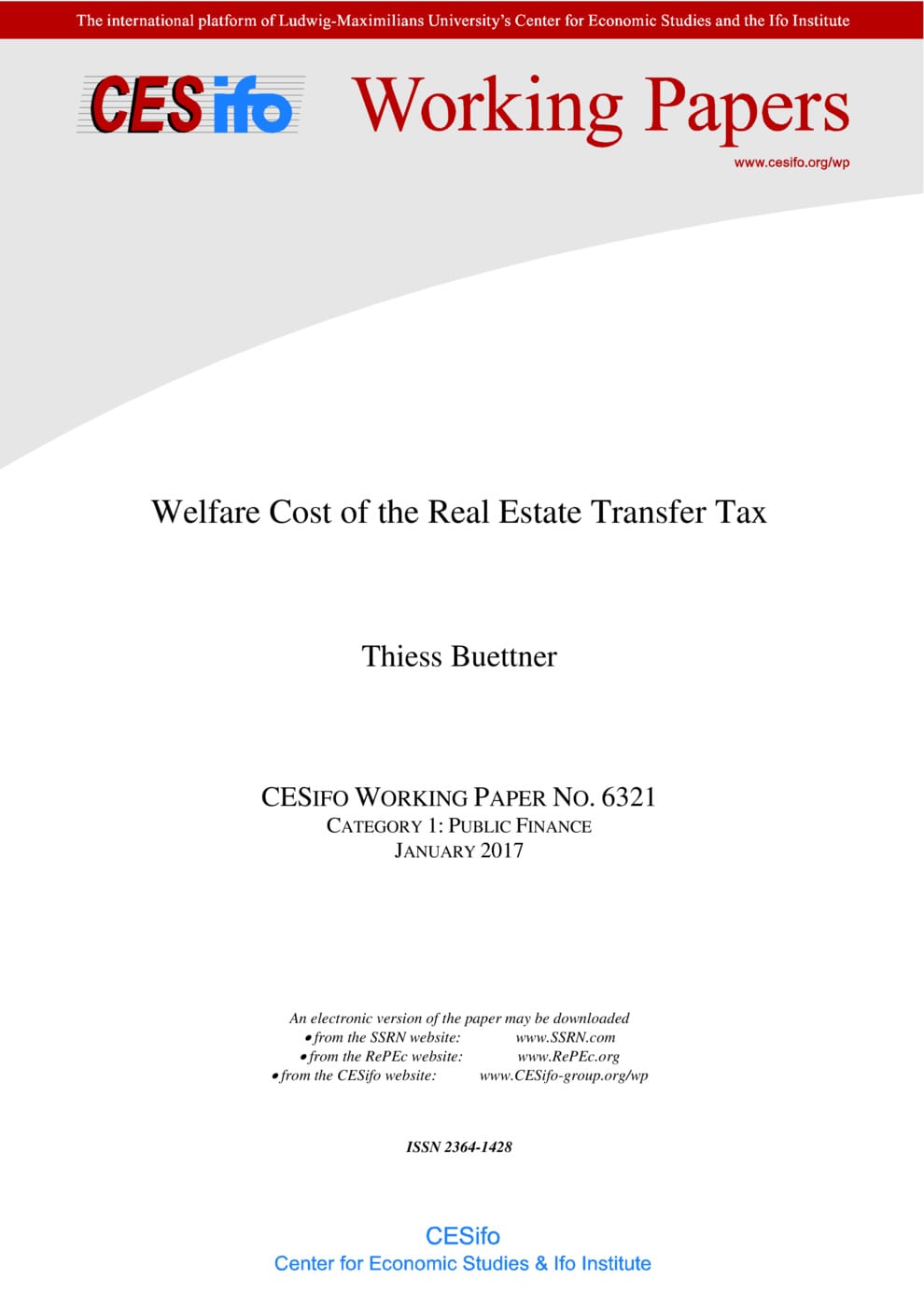Welfare Cost of the Real Estate Transfer Tax
CESifo, Munich, 2017
CESifo Working Paper No. 6321

This paper considers the welfare implications of a tax on real estate transfers. A theoretical analysis shows how the discouragement of mutually beneficial transactions as well as tax-sheltering activities give rise to a welfare loss that can be estimated comprehensively from the empirical elasticity of the tax base. In the absence of tax planning, the elasticity of the tax base is determined by the hazard rate to deter transactions at the margin. With tax planning, the elasticity of the tax base is also driven by the “technology” of tax sheltering. Empirical evidence on the deadweight loss is obtained from the analysis of real estate transfer taxes in Germany. After a constitutional reform has granted the German states the right to set the local rate of the real estate transfer tax, over the last ten years many states have made use of this discretion and have increased the tax rate - some of them repeatedly. Based on the empirical estimate of the revenue effect of these tax increases, the paper shows that the German experience points to a substantial welfare cost of real estate transfer taxation. The preferred estimate suggests that each additional Euro of revenues raised is associated with an increase of the deadweight loss of about 67 cents.
Public Finance
Public Choice